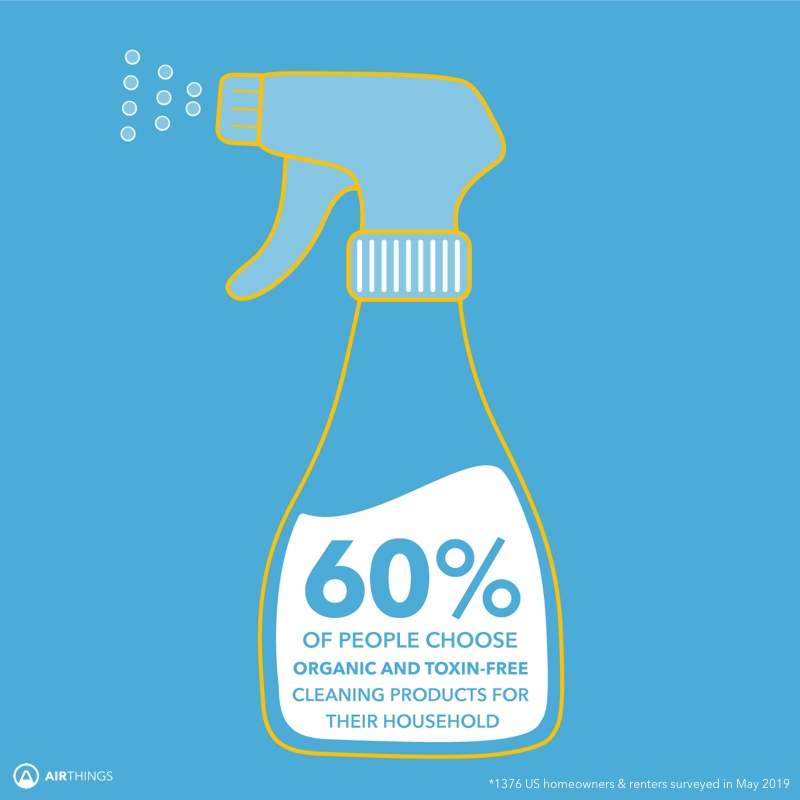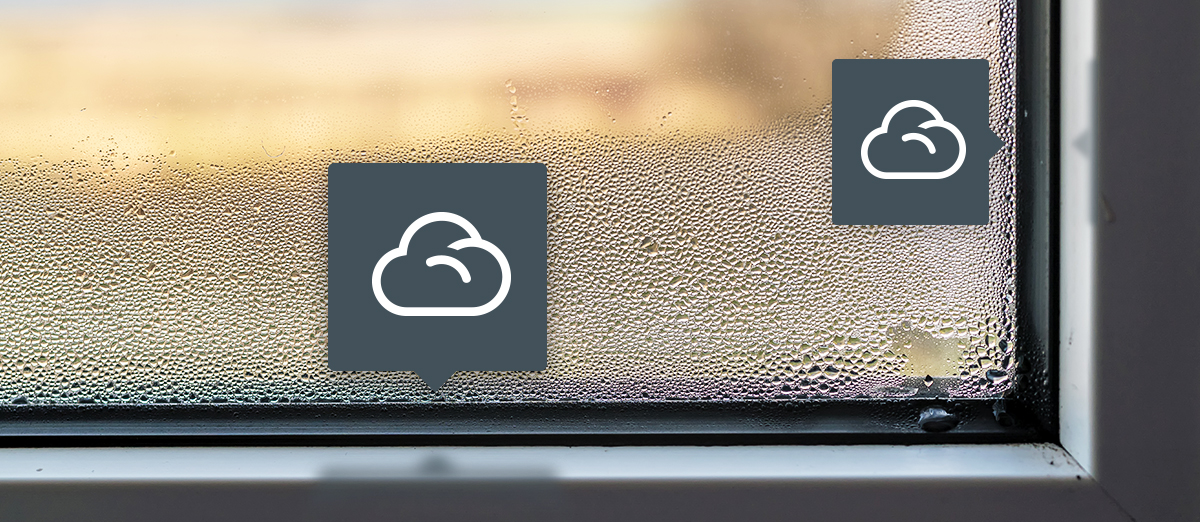Moving into a new home is stressful enough, without forgetting something important from your big list of to-do’s. Let us take one thing from your list: research radon testing for home buying. Here is everything you need to know about radon testing in your new home and old home. Plus we include bonus information on air quality considerations in general.
Contents:
- Added benefits of long term monitoring, not just radon
- What steps should I take with indoor air quality when I’m choosing a new home?
- How to maintain great air quality when you move in
Should you measure radon when you buy or sell your home?
With so many things you need to keep on top of in home buying, radon testing is easy to forget. You wait anxiously for the surveyor to confirm your home is safe to sell. The mortgage paperwork is checked, then rechecked. You get a thorough survey for your new home so you are not surprised by leaks, mold growth or uneven foundations. You make calls to the insurance company to update your details, and tell the post office your new address. And now? You’ve heard that the Environmental Protection Agency says that if you are buying or selling a home, you should have it tested for radon. So what next?In the US there is often a legal obligation to monitor radon for 48 hours before selling property. There are benefits to thinking past this requirement when you’re making real estate decisions, to consider the wider impact of radon and the overall importance of indoor air quality.
Radon is a colorless, odorless radioactive gas that is emitted naturally when uranium breaks down in rock, soil, and water under our homes. The gas can seep into buildings through cracks in the foundations and concentrate when it is trapped indoors1. And the higher the levels of radon, the more harmful it is to your health and wellbeing.
This matters, because radon increases our risk of getting lung cancer. The gas is responsible for an estimated 15,000 – 22,000 lung cancer deaths in the US each year2 and the Surgeon General has warned that it is the leading cause of lung cancer among non-smokers3. 7.1 million American homes are affected by potentially unsafe levels of radon.
In the US, real estate laws require homes to be inspected before they are sold, and radon testing is frequently part of that process. This requires using a short-term testing kit that measures levels of the gas for a minimum of 48 hours.
The results provide a snapshot of concentrations in indoor air, but the insight they offer is limited, because conditions inside the home change constantly. To get a more accurate picture, you may want to think about installing indoor air quality monitors in your home. As you already have to spend the time doing the radon test, why not get a long term radon monitor and ensure your levels are safe all year round?
Added benefits of long term monitoring, not just radon
Radon is one aspect of the air you breathe, but indoor air quality, or indoor air quality, covers other pollutants and conditions that affect your health and well-being.
Indoor air quality monitors measure contaminants like airborne chemicals (VOCs) that exist in cleaning products, paints, solvents, carpets, and furniture. From the fresh lick of paint your old house needs to sell, to the new furniture you buy for the new house, you will be spending a lot of time around airborne chemicals when buying and selling a home. These chemicals cause short-term problems like headaches and inflammation of eyes, nose or throat4, as well as contributing to longer-term conditions like cardiovascular disease, asthma and lung cancer.
Indoor air quality also includes things like air pressure, temperature and humidity, that affect how we feel and how we perform. These conditions are linked to complaints like headaches and migraine5 or variations in blood pressure. Not to mention high humidity and it's links to mold growth. Learn how to get rid of mold in your home here→
To ensure that you live in a healthier, more pleasant environment, it’s worth thinking beyond 48-hour radon detection and taking indoor air quality into account as you buy real estate or move into a new home. Long term monitors such as the Airthings detectors measure continuously, so you will know when high levels are accumulating and are able to prevent a bigger problem.
What steps should I take with indoor air quality when I’m choosing a new home?
When you’re considering a real estate purchase or planning to rent a new property, a good starting point is to check the levels of outdoor pollution in the area. According to research by the Environmental Protection Agency (EPA), concentrations of key pollutants are typically two to five times higher indoors than outdoors6. If the outdoor air quality is poor, you’re more likely to need mitigation, like a ventilation system, to ensure good quality indoor air. Particulate matter, or PM for example is a range of particles of dust, dirt, and liquids that become suspended in the air. Some of these are large enough to see, like smoke, smog, or soot, but the most harmful are smaller, invisible particles1.
It’s important to make sure levels of radon inside the property are checked. If levels of the gas are high, it’s possible to take action to improve the situation. Simply opening a window can help, but there could be a need to seal up holes and cracks in the building or place plastic sheeting above any crawl space beneath the house7. You may need to install a radon mitigation system8. As radon is an invisible gas, the only way to know if levels are high is to monitor.
There can be a trade-off between properly ventilating your house and achieving energy efficiency, so you’ll need to bear that in mind. Builders strive to make houses more airtight to prevent wasting heat, but that affects the fresh air, temperature and humidity inside, which in turn has an impact on indoor air quality.
On the flip side, if the building leaks too much energy, you’ll need tech that maximizes the efficiency of boosting indoor air quality – for example by automatically turning ventilation systems on only when they’re needed or when the house is occupied.
The newest indoor air quality solutions, including Airthings detectors, integrate with smart-home tech, so you can use Google Assistant or Amazon Alexa to monitor and control the quality of air in your home. It’s even possible to have a cutting edge monitor alert you to high levels of pollutants by changing the color of your smart bulbs.
If you’re considering renting a home, the potential to make structural changes may be limited. Wireless indoor air quality monitors can be installed without drilling holes and, if the building suffers from persistently poor air quality, they’ll provide evidence that your landlord needs to take action.
How to maintain great air quality when you move in
So you’ve moved in, and you’re monitoring indoor air quality to measure levels of radon, other pollutants and air conditions. How can you take action on this information?
To cut down on airborne chemicals (VOCs) in your home, it helps to choose products that are as healthy as possible. 60% of the people we surveyed regularly purchased organic and toxin free cleaning products for their households, which is a great way to limit the amount of harmful chemicals they inhale. You can read more aboutt he Airthings air quality survey here→ 
Similarly, certification bodies for the paint industry are increasingly labeling their products, ‘low VOC’, ‘no VOC’ or ‘zero VOC’. If you’re planning to redecorate, it’s sensible to look for paints that carry these labels.
New furniture and carpets are another potential source of VOCs. You can cut exposure by using older furniture, including upcycled and repurposed items. Old woolen carpets also produce less chemicals than modern ones that ordinarily use greater quantities of glue.
In contrast, older ceiling tiles are likely to emit more airborne chemicals (VOCs), while newer tiles are generally safer.
If you have potentially toxic substances in your home, it’s worth keeping them in an unattached garage or outbuilding, if you have one, or putting them into storage. Chemicals like solvents, paints and powerful cleaning agents are not just hazardous when you use them. They give off gases that find their way into rooms across your property, reducing the quality of your air.
On average, we spend 90% of our time indoors, so air quality is something that we shouldn’t leave to chance. It’s important to measure radon levels when we buy or sell property, but monitoring the air we breathe should be an ongoing process.
When we think about radon, we often think about a single number that we get when we buy or sell a home. But what about the other months or even years? More often than not, other contaminants are also overlooked. Rather than using a 48-hour test to check a real estate compliance box, we should be thinking year-round about indoor air quality and using long-term monitors to make sure we can be at our happiest, healthiest and most productive in our homes.

Takeaways
- When we buy or sell property, it’s important to test radon, but monitoring the air we breathe should be an ongoing process.
- Radon is a radioactive gas that can cause lung cancer. In the US, sales of homes usually involve a 48-hour test to measure its concentration in indoor air.
- A short-term test like this provides a snapshot, but it is not a substitute for monitoring radon over the longer term. Similarly, when it comes to real estate, we should be thinking more broadly about indoor air quality.
- When you’re buying a new home or renting, you should check levels of radon, as well as consider ventilation and ways to ensure good indoor air quality in the property.
- When you move in, buy toxin free products to limit your exposure to harmful airborne chemicals (VOCs). Choosing older furniture or upcycled items helps too.










.webp)



